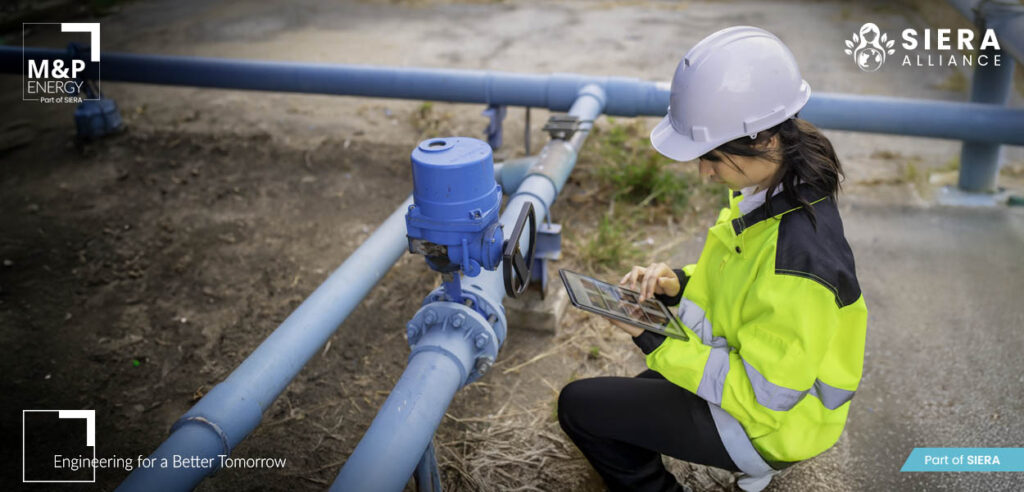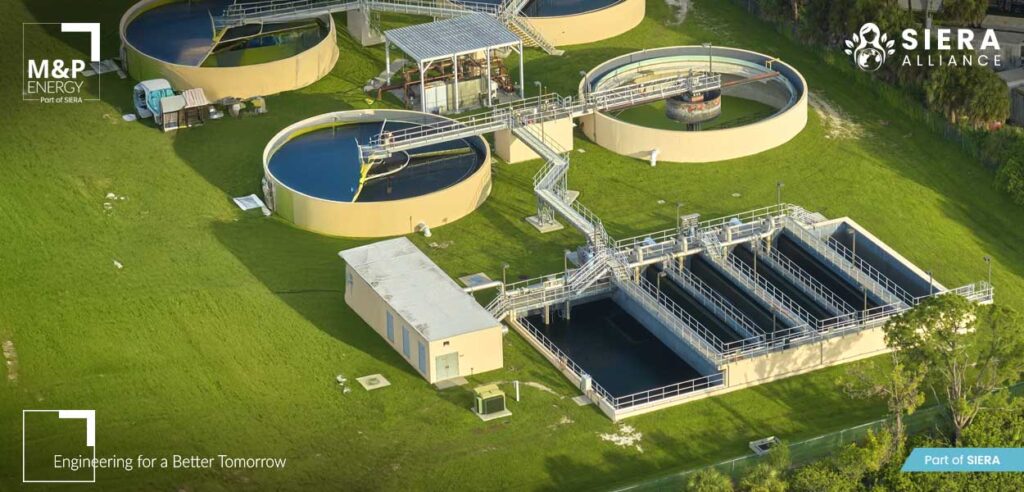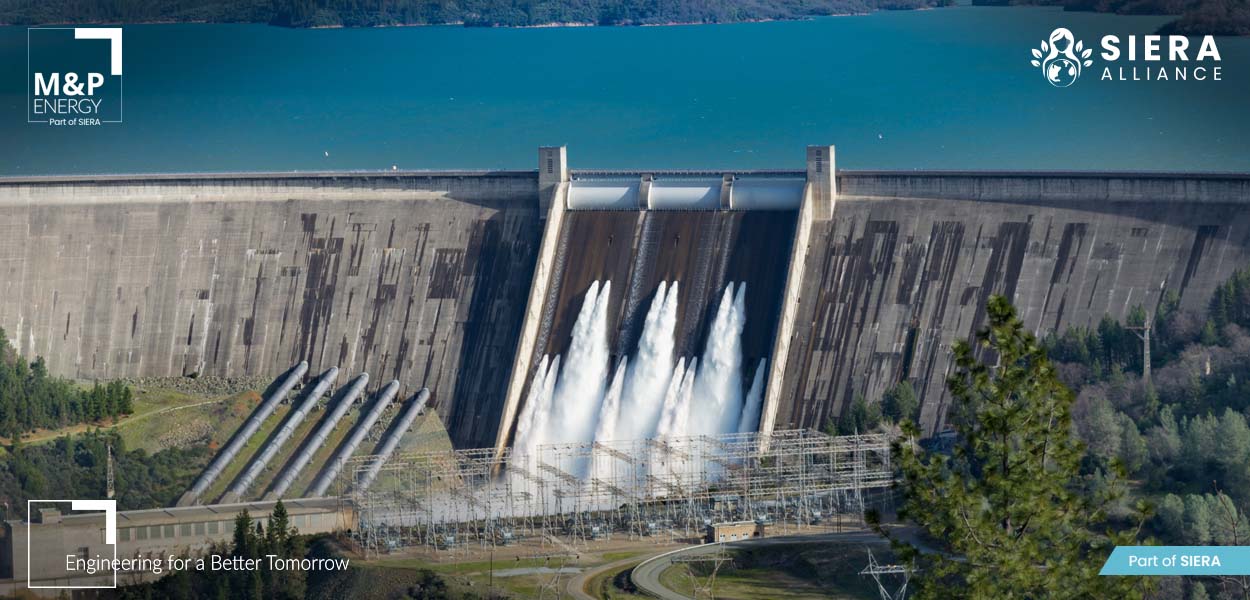Groundwater pumps are essential for households, gardens, and even heating systems — providing a reliable water supply sustainably, and at a lower cost. By leveraging groundwater as a resource, households can reduce dependence on municipal water networks, which are increasingly strained by droughts, aging infrastructure and high leakage losses.
With decades of expertise, M&P Energy – part of SIERA, supports clients in designing and implementing efficient groundwater systems tailored to their needs. This article will guide you through the essentials of groundwater pumps: what they are, how they work, installation methods, maintenance practices, leading brands and advanced applications.
Common Uses of Groundwater Pumps in Households and Gardens
Groundwater pumps are versatile systems widely used in residential and garden applications. In households, they draw water from wells or boreholes to provide a reliable supply for drinking, washing and daily domestic needs. Gardeners use groundwater pumps to irrigate lawns and plant beds, lowering dependence on municipal water systems and reducing costs. In some cases, groundwater pumps are also integrated into heat pump systems, enabling energy-efficient heating and cooling by harnessing the stable temperatures of groundwater.
Benefits of Using Groundwater as a Water Source
Groundwater is a resilient and sustainable resource with multiple benefits:
- Reduced reliance on municipal systems: Lower water bills and greater independence.
- High water quality and availability: Reliable supply even in times of drought.
- Eco-friendly heating option: When paired with groundwater heat pumps, it enables low-carbon climate control.
- Hydrological stability: Groundwater storage reduces surface runoff, helping stabilize local water cycles.
By using groundwater responsibly, households and gardeners can enhance both cost efficiency and sustainability.
Section 1: Understanding Groundwater Pumps
What Is a Groundwater Pump?
A groundwater pump extracts water from underground aquifers for domestic, garden, agricultural or heating purposes. Some models are designed specifically for groundwater pump heating applications, where they connect to heat exchange units.
There are two main types:
- Submersible borehole pumps: Stainless-steel units like the Grundfos SP series, ideal for deep wells.
- Jet and constant-pressure pumps: Such as Grundfos SQ/SQE models, used for shallower household applications.
How Does a Groundwater Pump Work?
A groundwater pump operates on two main principles: suction and delivery. Water is drawn into the pump casing and pushed upward through a discharge pipe under pressure.
Key components include:
- Motor and impeller (drive water upward)
- Filter for groundwater pump (prevents sediment entry)
- Pipes and shaft (connect pump to delivery systems)
Using the right filter system ensures reliable performance and extends the pump’s lifespan.

Section 2: Installation of Groundwater Pumps
How to Install a Groundwater Pump
Installation involves several steps:
- Drill or identify a well of required depth (e.g., 4–10″ borehole for Grundfos SP pumps).
- Install pump shaft assembly and lower the unit to correct depth.
- Connect piping and a check valve to prevent reverse flow.
- Set up the electrical supply and control unit (e.g., Grundfos CUE controller).
- Test the system, prime if necessary, and check for leaks.
Safety tips: Always ground electrical connections, seal boreholes properly, and avoid over-pumping aquifers. While DIY is possible for shallow systems, professional installation is recommended for deep boreholes or large systems.
Section 3: Using Groundwater Pumps in the Garden
Benefits of Groundwater Irrigation
Garden groundwater pumps can significantly lower irrigation costs by replacing potable water use. Groundwater irrigation is sustainable when abstraction stays within legal limits. Always check local regulations to ensure groundwater pump use in gardens is permitted.
How to Connect a Groundwater Pump for Garden Use
To connect a pump to your irrigation system:
- Attach to drip lines or sprinklers with pressure regulation devices.
- Install a filter to prevent clogging.
- Use constant-pressure models for consistent flow.
Efficiency tips: Water in the early morning, monitor intake depth and avoid overwatering. Proper setup ensures efficient and sustainable irrigation.
Section 4: Maintenance & Troubleshooting
Common Groundwater Pump Issues
- Pumpe saugt Luft: Check seals, inlet depth and ensure intake is submerged.
- Pumpe fördert kein Wasser: Verify priming, depth, motor and impeller condition.
- Verlust der Befüllung: Re-prime system after maintenance or outages.
Many problems stem from poor installation, emphasizing the need for proper setup.
Repair and Maintenance Tips
- Inspect motor, wiring and float switches seasonally.
- Clean or replace filters regularly.
- Check seals and lubricate gaskets.
Section 5: Choosing the Right Groundwater Pump
Top Brands and Models
Several brands are recognized for quality and reliability:
- Grundfos: Industry leader with SP (submersible) and SQ/SQE (constant-pressure) models.
- Gardena: Popular for garden pump systems.
- Metabo: Known for durable domestic water pumps.
- Einhell: Offers affordable, versatile household models.
Among these, Grundfos groundwater pumps are widely considered benchmarks for performance and longevity, often ranking as best-in-class in pump efficiency tests.
Cost of Groundwater Pumps
| Pump Type / Brand | Typical Price Range | Application |
| Grundfos SP Borehole | €4,400–€7,300 (1.5–3 kW units) | Deep wells, high-demand |
| Grundfos SQE Constant-Pressure | €1,200–€2,500 | Domestic, irrigation |
| Gardena / Metabo / Einhell | €200–€800 | Garden and small household use |
| Installation (drilling, piping, electrical) | +€2.000–€5.000 | Depends on depth & system size |

Section 6: Advanced Applications
Groundwater Pumps for Home Heating
Groundwater pumps can be combined with heat pump systems to provide heating and cooling. These systems leverage stable aquifer temperatures for efficient climate control. With a coefficient of performance (COP) between 3 and 6, they deliver up to six units of heat per unit of electricity, saving up to 70% compared to conventional heating.
Section 7: Filters & Accessories
Choosing the Right Filter
A filter for groundwater pump is essential to prevent sediment damage. Options include:
- Mesh intake screens
- Sediment traps
- Inline filters
Filtration is especially critical when water is used for domestic purposes. Always ensure systems comply with drinking-water safety standards.
Nachhaltige Nutzung von Grundwasser
Grundwasserpumpen sind leistungsstarke, nachhaltige Werkzeuge für die Wasserversorgung im Haushalt, die Gartenbewässerung, die Integration in Heizsysteme und den Schutz von Kellern. M&P Energy – Teil der SIERA, bietet fachkundige Beratung bei der Auswahl von Pumpen, Installation, Integration in Wärmepumpen und Fehlerbehebung.
Harness the power of groundwater with confidence — contact M&P Energy today to design and implement your groundwater pumping solution.
Frequently Asked Questions (FAQs)
1. What is a groundwater pump?
A device that extracts water from underground aquifers for domestic, garden or heating use.
2. How does a groundwater pump work?
It uses suction and pressure to lift water to the surface.
3. Can I use a groundwater pump for heating?
Yes, it can supply water to heat pumps for efficient home heating.
4. Is a groundwater pump allowed in my garden?
Often yes, but local regulations vary. Always check water rights laws.
5. Why is my pump not drawing water?
It may need priming, have leaks, or the water table may be too low.
6. What does a groundwater pump cost?
From €200 for small garden pumps to €7,000+ for high-capacity borehole systems. Installation adds extra cost.
7. Can I install a groundwater pump myself?
Basic shallow pumps can be DIY. For deep or complex systems, professional installation is advised.


